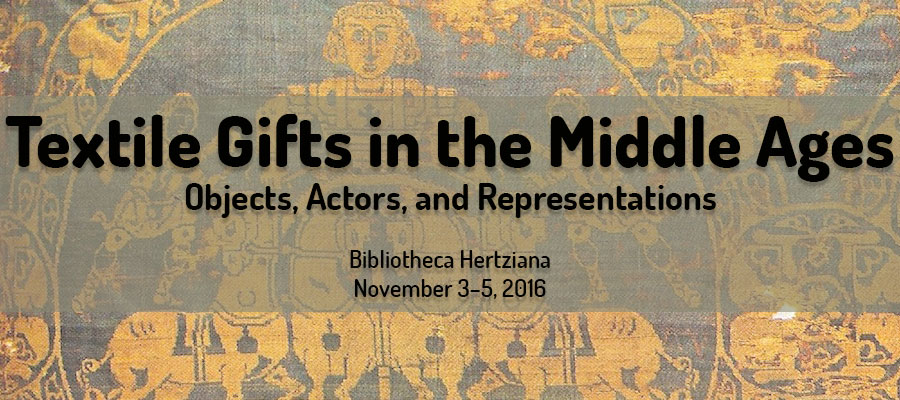Textile Gifts in the Middle Ages – Objects, Actors, and Representations, Bibliotheca Hertziana, November 3–5, 2016
Gifts of textiles and clothing appeared in diverse contexts and fulfilled various functions in pre-modern Europe. They could be offered in the course of an initiation rite and or an act of social transition, including upon investiture, marriage, or entry into a monastery. Gifts of clothing to the poor, meanwhile, were among the works of charity thematized in the vitae of numerous medieval saints. Sumptuous textiles were sent as resplendent gifts to religious institutions or, like patterned silk textiles from Byzantium, circulated through diplomatic gift exchanges. Gifts of clothing were also distributed within the court as compensation in kind, which supported the structuralization and hierarchization of courtly society. Textile gifts could represent the donor. Especially in the case of clothing previously worn by its donor, the physical presence of the giver might have been woven into the materiality and form of the gifted garment.
The goal of this interdisciplinary conference is to situate the diversity and polysemy of such acts of symbolic communication into the broader context of medieval gift culture. The integration of anthropological and sociological models (Marcel Mauss, Bruno Latour) into an art historical approach allows for gifted artifacts to be taken seriously as independent entities within the giving process as a socially generative form of communication. The conference therefore investigates the relationship between human actors and the “agency” of gifts themselves, exploring how the dynamics of reciprocity and its attendant obligations were charged both visually and materially.
